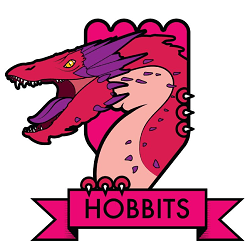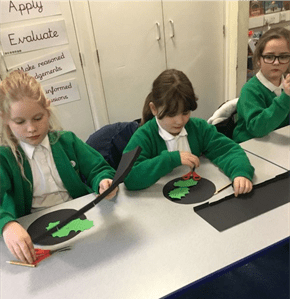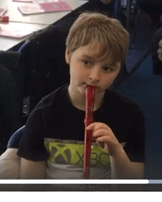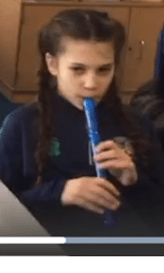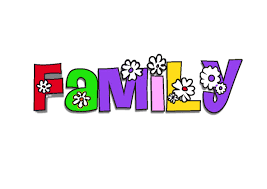Stronger Together!
Class teacher- Mrs Staples
Mr Douglas and Ms Brown also help us with our learning
Autumn 1
English
In English, this half term, we have been focussing on a novel from a different culture. To tie in with our History, Geography, Art and RE we have read stories from ‘Arabian Nights.’ We began with the story of ‘Ali Baba and the Forty Thieves’ where we learnt some fantastic new words including ‘flagon’ and ‘silk.’ Following on from this, we created a story map of the novel to help us remember all the twists and turns! We discussed the characters we met and created a character profile using point, evidence, explanation. The children used very strong and specific adjectives such as manipulative and generous. Continuing with our reading phase, we had to separate statements into fact and opinion, which led to some debating within our class! Next, we read Aladdin and The Magic Lamp, we had watched the film at the beginning of term and so made comparisons to the novel and found it to be very different! We used this story to create our own, we developed our own characters and plot. As it has been a long time since we have written a story, we found it quite a challenge to draft and write the story – but we managed it and created some fantastic Arabian tales!
History
This term our enquiry is ‘What was life like in the Golden Age of Islam?’ Which links into our learning in lots of other subjects this term. Our first ancillary question was ‘What did Abu Jafar Al-Mansur’s ‘City of Peace’ look like?’ We learnt about Al-Mansur and his role in Early Islamic Civilisation. We listened to a description of his city and attempted to draw what it looked like! We then discussed our illustrations with others and talked about what they had in common and what was different. After this, we looked at illustrations created by historians of the city and compared these to our own drawings. Our next investigation was about people travelling along a road with lots of things on the back of camels, we later learnt the word ‘commodities’ which is what the camels were carrying. We found out, using different historical sources, that these were merchants travelling along a very famous trade route – The Silk Road and this linked in with our Geography learning.
Geography
This term and into the first half term of Spring, our enquiry is ‘Why is Fair Trade fair?’ Our first ancillary question led us to a discussion about roads and how important these are in our lives. We looked at a photograph of a steep, windy road and had to speculate where it was and why it was considered the most important road in the world, 2000 years ago. We remembered that they would not have had cars or buses 2000 years ago, but they may have travelled by animal – such as horse or camel. We discovered that this was part of The Silk Road, one of the most famous trade routes in the world. We found out that China produced a very valuable commodity called silk and that merchants travelled to collect it to sell in Baghdad, which was Al-Mansur’s ‘City of Peace.’ To develop our atlas skills, we tried to make a list of all the countries the road passed through – we found this a real challenge!
Our next lesson was our favourite! We learnt about Marco Polo and his journals. We listened to a description of an animal that he had seen and had to try and draw it – some of our illustrations we bob on and some were a little on the wild side! As we enjoyed this activity so much, we watched a clip of an unusual creature and created our own description in the style of Marco Polo for another class to try and draw!
Art
In Art, we are creating some Islamic patterns to link with our learning in History and RE. We analysed some patterns and pieces first, focussing on the line, pattern, and shape. We then used some geometric shapes to create patterns that we could make an observational drawing of. We haven’t finished our Artwork just yet, so we will be working on it next half term as well.
Music
Year 5 children have been hard at work learning to play the descant recorder. They have learnt to play the notes B, A and G. They can hold the descant correctly and are getting much better at changing their finger position and playing softly to create a recorder ensemble. They have improved their knowledge of formal notation by trying to read the notes which include crochets quavers, and minims.
RE
Our topic this half term was ‘Islam.’ During this unit of work, we were aiming to answer the question ‘Why is the Qur’an important to Muslims?’
Firstly, we discussed a time of guidance and how this was followed. We thought about how religious people are guided by holy books and the importance of rules.
Next, we made links with the Five Pillars of Islam. We were able to name the five pillars and understand what each pillar represents.
In addition to this, we tried to understand why the Qur’an is a holy book for Muslims. We learned that, for Muslims, the Qur’an is the direct word of God. We also recognised that it is treated with great respect and learned about what it contains.
After that, we were able to gain an understanding of Ramadan. We learned about when Ramadan is observed, understood what it is and gained a greater understanding of fasting.
Finally, to finish our topic and as a link to art week, we studied Islamic art and created our own geometric patterns.
PSHE
Our topic this half term was ‘Being Me in My World’
As part of this topic, we discussed how we could face new challenges positively and set personal goals.
We then investigated our rights and responsibilities as a British Citizen and as a member of our school.
Next, we made choices about our own behaviour because we know how rewards and consequences feel.
In addition to this, we learned about how an individual’s behaviour can impact on a group.
To finish our topic, we learned about democracy and how having a voice benefits our school community.
Autumn 2
Whilst the last half term was somewhat disrupted for year five, having to isolate and work from home for two weeks, there was still plenty of opportunity for learning to take place and for lots of fun to be had! Here is some information on the kinds of things we got up to on the run up to Christmas half term.
Maths
At the beginning of Autumn 2, we continued to look at addition and subtraction, using formal written methods and have now started to look at Multiplication and division.
Recently, the children have been learning about multiples and factors of a number. They have had to identify common multiples or factors of numbers by applying their knowledge of their timetables. Now, we are looking at prime numbers. The children will learn what a prime number is and how to identify one.
English
In English, year five studied Classic Fiction. They looked at film adaptations of popular works such as: The Wizard of Oz, Mary Poppins, Chitty Chitty Bang Bang, Alice’s Adventures in Wonderland and the Secret Garden, and they compared these to the books themselves and used them as inspiration for writing of their own with some fantastic results. For example, the children learnt how to describe an effective villain. They used techniques such as similes, emotive language and vivid imagery created from carefully chosen vocabulary, to create some especially evil characterisations! From a grammatical perspective, the focus included the use of relative clauses, varied sentence openers and correctly punctuated dialogue. They also learnt how to describe a setting that sparks the reader’s imagination. The children described the secret garden using exciting adjectives and expanded noun phrases and, where appropriate, they upgraded their vocabulary with the aid of a thesaurus to really make their descriptions shine. These descriptions can be seen displayed in the Key Stage 2 corridor, written up in the children’s very best cursive handwriting!
History and Geography
In History, as part of the wider topic of the Golden Age of Islam and the old Silk Road trade route, year five have been looking at the city of Bagdad, a historical centre for trade, known in ancient times as Madinat al-Salam. This half term, the children used their skills of deduction to work out what the building, the Bayt al-Hikma, was used for many years ago. Together they analysed evidence such as pictures and engravings from the time in question, and many of the pupils came to the correct conclusion that it was, in fact, a centre for learning (a library referred to as The House of Wisdom). Such activities allowed the children to practise their skills of: team work, analysis, investigation, collaboration and the presentation of findings to an audience.
Continuing with the theme of international trade, year five pupils looked at imports and exports, in particular, to and from China, as part of their Geography studies this half term. They learnt technical vocabulary such as: commodities, products and tariff, and about the process/ issues involved in trading with other countries. Activities gave the children the opportunity to practise their skills of categorising, collaborating and to make judgements based on the evidence available to them. The children also began to learn about Fair Trade and what this means, a topic they will continue to pursue over the next few weeks.
Science
Our science topic has been Earth and Space. The children have really enjoyed researching and learning about our solar system and about how space affects the earth including the seasons and night and day. We will be continuing with this topic next term.
Computing
In computing, the children have been practicing their coding. They have been creating algorithms using functions and inserting clickable buttons into their programmes.
P.E.
The children have continued to go swimming as part of their P.E. this term. All the children are very confident in the water with most of the class having swam at the deep end of the pool recently. The children have been working hard to improve their ultimate swimming distance and have also practiced how to stay safe in deep water.
We missed a few weeks of swimming due to pool closures and in that time we focused on invasion games, including football and netball.
Spanish
In year 5, we have been learning numbers in Spanish and then applying the numbers to tell someone how old we are. The children have been able to ask and answer questions relating to their age in Spanish.
Art
In Art, year five looked at Islamic Patterns including the use of line, colour, pattern and shape. The initial focus of this topic was to study and analyse Islamic Patterns and their key features. The children soon realised that Islamic patterns are based around the use of geometric shapes, they are symmetrical and repetitious. It was then time to create some patterns of their own and the children used concrete shapes to experiment and explore the possibilities. In pairs, the children created their own version of an Islamic Pattern and then faced the challenge of recreating it on paper. The drawings were very effective and careful colouring and use of sharp pencils and rulers allowed the children to create artwork to be proud of.
Music
Year 5, The Hobbits, have been continuing to learn the descant recorder and develop the use and knowledge of formal, written notation which includes dotted crotchets. The year 5 children can now play the notes B, A and G and can recognise these placed on a treble clef musical stave.
We have learnt to play the Hot Cross Buns and had the challenge of trying Twinkle, Twinkle Little Star. The children really enjoyed playing the glockenspiels following a graphic score to play the Christmas tunes – Twinkle, Twinkle Little Star and Jingle Bells.
With Mr Garrett, we learnt about the history of carols and sang in monophonic and polyphonic, learning Felice Navidad – a Spanish Christmas carol, Rudolf the Red Nosed Reindeer and We Wish You a Merry Christmas.
Christmas Crafts
In the days approaching the end of term, year five enjoyed a range of Christmas activities in and amongst their regular lessons of Maths and English. For example, pupils enjoyed making a festive top hat and a snowflake ballerina for our whole school display: The Twelve Days of Christmas. They also got tied up in knots making Christmas wreaths, showered in glitter making cards and Christmas stars, and their beautiful performance of several Christmas songs, delivered via the website, brought a tear to many an eye.
In addition to this, the children met a special guest in the form of Rudolph the Reindeer and posed for a photograph with this festive four-legged visitor which was then used in the making of this year’s calendars. Overall, we did not let the current situation dampen our Christmas spirits and we are looking forward to whatever exciting learning opportunities this upcoming half term will bring.
Spring 1
Throughout Spring 1, the year 5 team provided a wide range of remote learning including recorded lessons, Live Lessons and interactive activities including class quizzes and competitions. There has been a number of theme days to shake things up and give the children different experiences. We have taught every subject over the past 6 weeks and information about each is below!
English
In English, we have focussed on Reading and GPS. At the beginning of the half term, we completed novel studies, looking at either extracts or film clips and completing comprehension activities around these such as character inference and quiz making for a friend. In GPS, we have focused on the foundations of writing, looking at word classes and sentence types. We have completed online lessons and followed these up using spag.com.
One of our favourite weeks of Spring 1 for English was creating an explanation text for a Wallace and Gromit invention – The Snoozatron. We worked together on this and thoroughly enjoyed the comic aspect of the cartoon. We used technical vocabulary and conjunctions to create our explanation text.
Maths
In Maths, we focussed on the four operations and learning written methods for these. We began with addition and subtraction before moving on to multiplication. We touched on division, but this was a challenge! We preserved and we have grasped the ‘bus stop method’ for divisible numbers. As well as online maths lessons, we had Maths on the Move Day where the children had a variety of practical activities, they could do to demonstrate maths learning, this included, measuring the distance a paper aeroplane could travel.
Humanities
Our enquiry for History remote learning has been ‘What did the Vikings want and how did Alfred help to stop them getting it?’ We started off looking at a series of images and investigating who the Vikings were and why they travelled to Britain. We learned about the treasures they wanted and ultimately why they wanted to settle in Britain and why this angered the Anglo-Saxons. We also learnt that the horned helmets that Vikings are synonymous with is actually a myth – they never wore horned helmets! This led to a discussion about other historical stories and whether they were fact or myth, including the story of Robin Hood. We had a discussion through a Live Lesson and half thought it was a myth because they could not believe that one man would risk his life to give to the poor or that there was no solid evidence of him. Others believe it is true because the story has been retold for over 700 years and so there must be truth to it! What do you think?
In Geography, we have focussed on natural disasters through our remote curriculum and have learnt about volcanoes and earthquakes, how they are formed and the damage they can do. We have created short explanations and have watched different animations to help us understand what is happening to the earth when earthquakes and volcanic eruptions take place.
Science
For the past half term, the children have been learning about animals and their habitats and finding out why an animal needs a specific home to meet it’s needs. Such as a polar bear needing a cold habitat as they have thick skin and fur. They also hunt and feed on prey that live alongside them in the Artic. The children have also learnt about warm-blooded and cold-blooded animals and how this relates to their habitat and how they are classified – reptile, bird, mammal etc.
Art/DT and computing
This half term the children have been challenged to learn about renaissance artists such as Michelangelo and DaVinci. They have also used Purple Mash to design video games which includes computing skills as well as design skills.
Music
The year 5, Hobbit children have looked at how rhythm is played over the beat. They have listened to and watched several YouTube videos explaining rhythm and how this differs to the pulse. The music genius Wolfgang Amadeus Mozart was born in January, so year 5 were set the task to research him and then have a go at short Mozart Music Quiz online. The children then turned to creating their own music composition using the music tools in Purple Mash and Chrome Music Lab.
Spanish
The children have been practising greetings, colours and numbers to 20 in Spanish. They have been able to access different activities to help them practise their skills in Spanish.
RE
In RE the children have been learning about Hinduism. They have learnt about the principles of the religion as well as the religious building and book. The children have also learnt about the many symbols that are significant in Hinduism.
PSHCE
Every week we have held a weekly meet on Google Classroom for the children to touch base and share their experiences during lockdown. This has been a time to catch up with other children as well as staff members.
As a learning focus, the children have been completing the unit ‘Healthy Me’ which has been crucial during lockdown as we learn how to look after our physical and mental health. We learnt about how to eat a balanced diet to keep our bodies healthy and also looked at the importance of kindness. As well as this, we held a non-screen day to recharge our batteries as well completing activities linked to Children’s Mental Health Week.
PE
Over the last half-term in Year 5, we have looked at a number of different ways of being active at home. The children were given the opportunity to join in with teacher/student work-outs with pre-recorded videos. During the half-term, we also looked at mindfulness through exercises whether it was through yoga or breathing exercises to stay calm and healthy, not just physically, but mentally as well. The children were also given the opportunity to access resources from Burnley Schools Sports Partnership, to take on challenges at home with a number of different activities using everyday house-hold objects.
Spring 2
Maths
For the 3 weeks before Easter, we continued to look at Multiplication and division.
Recently the children have been looking at how to multiply and divide by 10, 100 and 1000. To do this the children used their knowledge of place value and moved the digits to the left or right. This included multiplying and dividing decimal numbers. We have also looked at formal written methods, including long multiplication and division working with up to four-digit numbers.
Science
To end the term, we completed our topic on Earth and Space. The children have really enjoyed researching and learning about our solar system and about how space affects the earth including the seasons and night and day. The children have compiled a lot of information and applied it to write explanations and create factual posters.
Computing
In computing, the children have been practicing their coding. They have been creating algorithms using variables and functions. They have also been challenging themselves by de-bugging code which is not quite correct.
P.E.
The children have been learning skills linked to rugby as part of their P.E. sessions. We have looked at the technique for an accurate pass and for how to catch and carry the rugby ball.
Music
The Hobbits have listened to ‘Oh Happy Day’ watching the clip from the film Sister Act. https://youtu.be/mXPoRnY3r10
We had a go at changing the lyrics: –
Oh Happy Place, Oh Happy Place
Is Burnley, Is Burnley
It’s Turf Moor, It’s Turf Moor
They play football there
We then reminded ourselves of the descant recorder fingering for the notes B, A and G and played Hot Cross Buns.
Summer
English
Our novel in Summer One was Charlotte’s Web. The children have thoroughly enjoyed reading this classic and partaking in a range of activities including, role on the walls, hot seating, illustrating, and writing in role. A new activity we particularly enjoyed was an emotions graph. This helped us to track the emotional journey the characters went on as well as to aid our recall of key events. As we are nearing the end of the year, it was important to challenge ourselves further to use UKS2 punctuation as well as up levelling our vocabulary. We had the chance to do this in a variety of written pieces including a diary, letter, and description. As well as fictional pieces, we enjoyed researching spiders and finding out how amazing these feared creatures really are! The children had to use high level thinking skills during this task – reading information texts, watching a documentary, and making notes that were pertinent to a fact file they were going on to write.
In Summer Two, we read ‘Frog Prince Continued’ which was a sequel to the famous Fairy tale ‘The Frog Prince.’ We began by making inferences from an illustration from the book and were looking for clues to tell us what the book will be about. Next, we read The Frog Prince and made connections to the Disney film ‘The Princess and the Frog.’ We discussed how lots of fairy tales are recreated in different ways – TV series, musicals, or live action films. As we were writing our final pieces of writing for the year, we really pushed ourselves with a setting description and an alternative chapter.
History
Our enquiry this term is ‘How have the medical breakthroughs of the last two hundred and fifty years affected the lives of people in Britain?’ This has been a particularly fascinating enquiry given the COVID19 pandemic as we were able to make connections to our experiences in the last 15 months. We began by learning what life expectancy was and what factors have affected that across the past 11000 years. We learned about the change that took place in the Neolithic Era as farming had a huge impact on the health of humans.
We then spent a long time investigating an epidemic that hit London in 1665 – The Great Plague! We were enthralled by the sources of information; a storyboard depicting the months of this disease sweeping across England. Using our higher order thinking skills, we learned about the differences between the rich and the poor and what the Government did to try and prevent the spread. Interestingly, they were locked down, told to keep their distance from people and to keep their houses and streets clean! The officials did not understand how this made a difference but realised it did! Our outcome from investigating this particular event was to write and perform a news report from the time. The children wrote fantastic scripts and performed them to their class!
Following this, we moved on to asking why life expectancy had only increased another 40 years since the Neolithic Era – it should have advanced much more! We found that war, lack of knowledge, unsanitary conditions and dangerous jobs had resulted in people dying young. Until, Edward Jenner made, arguably, the most important discovery in medical history – the vaccine. Again, this allowed us to make connections to current events with the role out of the COVID19 vaccine. We learnt how Jenner made the discovery, including the risks he took and how there was huge opposition to people having the jab. We debated whether the Government at the time should have made the jab mandatory – which they had done – or not. A big factor for most people saying it should was that Smallpox had been completely eradicated from the world in the 1970’s and that this is the only time a disease has become non-existent in history!
Finally, we answered our question ‘Which medical breakthrough was the most important?’ We started by ordering the key events, such as the discovery of penicillin, invention of a CT scan, vaccinations, the NHS etc. It was very tricky for anyone to choose just one from the list we made:
- Free healthcare
- Vaccinations
- Cleaner air
- Electronics
- Laws
- Human Rights
- Better food
Most agreed that all these factors had equal importance, and many would not happen without another.
Geography
This term our enquiry was ‘Where in the world is the most valuable treasure and who owns it?’ This linked closely with our history unit as we began by looking at the impact of cholera in Birmingham and how this led to a change that would impact the rest of the world. We learned about the impact of dirty water in poverty-stricken places in Birmingham in the 1800’s. We discussed the discovery of John Snow and how that would have impacted Life Expectancy across England. Following this we read an announcement by Thomas Barclay who had proposed a solution – building reservoirs in Wales. We investigated this to find out why Wales. This included working out the distance from Brimingham to other major cities, looking at the climate in Wales, the landscape and how the water could flow into Birmingham.
We spent a lot of time looking at rainfall in Wales and how this compared to Birmingham, we created a bar graph to show this for each month and then we spoke about advantages and disadvantages. Alongside this, we learned about the Water Cycle and how the landscape aided this such as V Shaped Valleys and impermeable rock.
Next, we compared two maps, a present day, and a historical map to see how the landscape had changed. We identified the new reservoirs that had been built and where these had been positioned – near to a river. We linked this back to our learning on the Water Cycle. This allowed us to develop our map reading skills, including reading grid references and key symbols.
Moving forward, we looked at current water usage in the world and which countries had the highest usage and which had the lowest. We discussed how this could be linked to climate, demographics, and population. We revisited the terms ‘developed and developing countries’ and how this plays a role in how much water is being used. We discussed what measured could be put in place to save water and developed ideas of what could be invented to provide water to countries with very little rainfall.
Art
To link to our history learning, we studied renaissance art this term. We looked at the key work of Donatello, Michealangelo, Leonardo Da Vinci and Rapheal. We evaluated their work and discussed how it was important at the time. We dissected and sketched a lily in the style of Da Vinci, developing our sketching skills as well as our work on perspective.
Music
Our music topic this half term has been the history of music. We have listened to some pieces from the Renaissance, Baroque, Classical and Romantic Eras.
Renaissance – Greensleeves
Baroque – The Four Seasons by Vivaldi, Messiah by Handel
Classical – Moonlight Sonata by Beethoven
Romantic – Swan Lake by Tchaikovsky
We researched the evolution of music, looking at how music was heard – vinyl records, a LP and a 45, a cassette tape, audio compact disc, a MP3, an ipod and ipad. Then discussed how we hear music today using the world wide web and apps.
The Hobbits have continued with their recorder playing in small groups and have a try at writing their own formal notation composition, in 4/4 time signature including; crotchet, minim, quaver twin, crotchet rest and minim rest.
Service for children only
Are you worried about something in school or at home?
Then whisper it by clicking on the button below.
